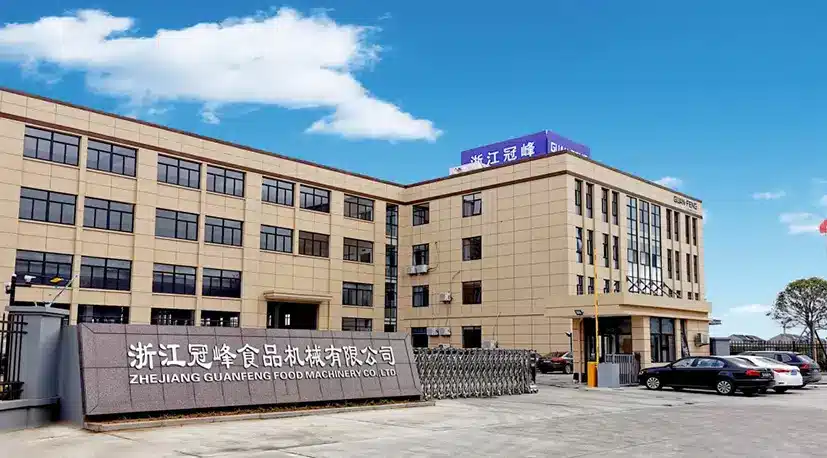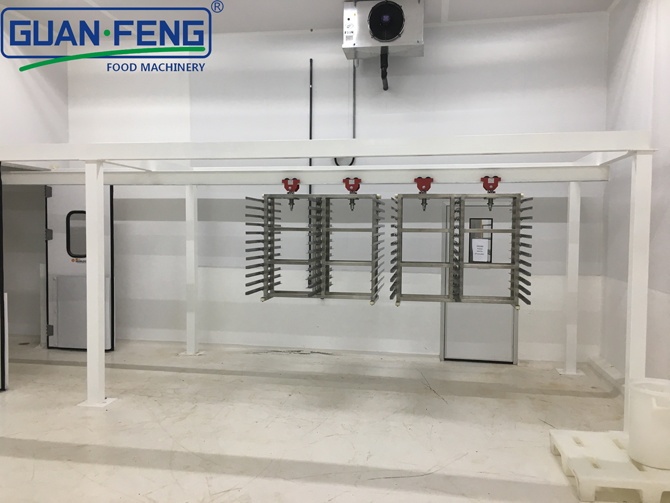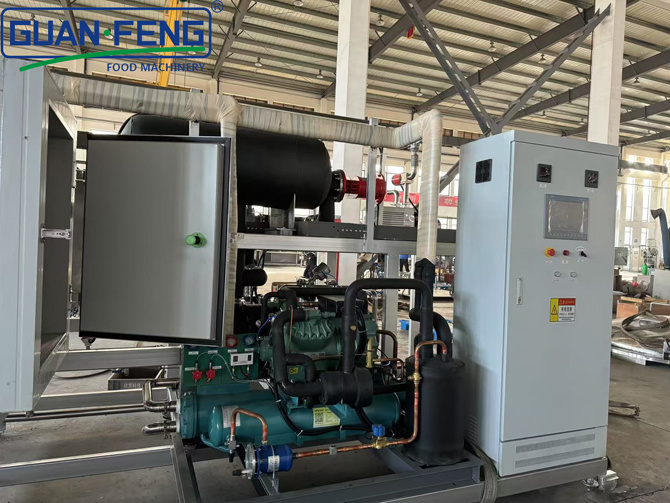BLOG
Focus on hot topics, real-time dynamics
How to reduce the production cost of freeze-drying machine
There are three factors that affect the operating cost of freeze-drying machines:
1. The influence of materials, such as eutectic point, thermal sensitivity, geometric size or thickness, can have a significant impact on the required drying time and operating costs;
2. The impact of the adopted process route, such as the final freezing temperature, freezing rate, heating temperature, heating rate, and determination and control of the machine, will affect the drying speed and operating costs of the materials.
3. The impact of the freeze dryer itself. The performance, limit parameter indicators, comprehensive capacity, energy utilization rate, operational stability, and ease of operation of freeze-drying machines can all have an impact on drying efficiency and operating costs, and even have a serious impact.
Ways to reduce operating costs
1. Materials with relatively simple composition have a higher eutectic point, such as vegetables, which have a freezing temperature of only around -15 ℃, a shorter freezing time, and corresponding heating time. They consume relatively less energy and have lower operating costs. However, materials with complex components such as salt, sugar, fat, amino acids, solvents, and other organic or inorganic components have lower eutectic points, lower freezing temperatures, longer freezing times, and correspondingly longer heating times, resulting in higher operating costs.
2. Some biological products such as fungi, vaccines, and other materials have very high thermal sensitivity, and the heating temperature should not be too high (-15 ℃~30 ℃). It is difficult to absorb heat, so it requires a long drying time and high operating costs. And materials with low thermal sensitivity (such as ordinary food) can be heated at high temperatures (75 ℃~100 ℃), greatly reducing drying time and operating costs.
3. Under the same weight, the smaller the geometric size, the larger the ice surface area of thin and loose materials, which is more conducive to sublimation and has a shorter drying time. If larger pieces of material are cut or crushed into smaller pieces, it can greatly improve the sublimation drying speed and reduce operating costs.
4. Thinning the product material thickness and appropriately increasing the drying shelf area while keeping the material amount and equipment power consumption unchanged can improve the heat transfer capacity of the drying shelf, shorten the freezing and heating drying time, and reduce operating costs, but the equipment investment will slightly increase.
The choice of process route can also affect drying speed and operating costs:
The quality and performance of different freeze-drying machines vary greatly, and the performance related to drying rate is mainly the temperature of the cold trap. The size of the pressure difference between the drying oven and the cold trap is determined by the temperature difference between the materials in the drying oven and the condenser. The larger the temperature difference between the two, the greater the pressure difference. The faster the water vapor flows from the drying oven to the condenser, and the shorter the drying time. Therefore, the temperature of the cold trap is an important factor affecting operating costs. However, obtaining a lower cold trap temperature at the cost of higher energy consumption will still increase operating costs, so energy consumption indicators are also important. In addition, the changes in vacuum degree and thermal conductivity of freeze-drying machines also have a certain impact on operating costs.
1. Control the pre freezing speed to create ice crystal structures that are conducive to sublimation. The pre freezing speed is too fast, the ice crystal particles are small, the pores of the dried layer are fine, and the resistance of water molecules flowing through the dried layer is high, which affects the drying speed. Appropriately reducing the pre freezing speed to make the ice grains coarse and the pores in the dried layer will be beneficial for the flow of water vapor and increase the drying speed, but the premise is to ensure product quality.
2. Control the pre freezing temperature. The pre freezing temperature should be controlled below the eutectic point of the product at an appropriate temperature. If it is too low, the cooling time used for exceeding the temperature and the heating time used for returning will be wasted.
3. Control the heating temperature. The initial heating temperature should not be too high. The outer ice surface of the product is easily melted by heat. The heating temperature should be slowly increased from low to high. After the initial heating stage, if the cold trap capacity allows and the product temperature does not exceed the melting point, the heating temperature can be increased as soon as possible to shorten the operating time under insufficient heating. The heating high allowable temperature varies for different products, and the higher the high allowable temperature, the higher the heating temperature and the faster the drying speed.
4. Control of residual moisture content in the product: The residual moisture content of the product should be appropriate. If it is too low, it will prolong the drying time, and if it is too high, it is not conducive to the long-term storage of the product.
5. In the later stage of drying, as the thickness of the dried layer of the product increases, a layer of insulation is added to make it more difficult for the surface of the ice layer to be heated, and the drying speed is greatly slowed down. In a vacuum environment, the air is thin, and conduction and radiation are the main methods for heating the ice layer of the product. Increasing the heat transfer is an effective way to accelerate the drying speed.
6. Reduce the temperature of the condenser, as a large amount of water molecules from the drying oven are "captured" by the condenser and form a frost layer on the surface of the condenser, like covering the condenser surface with a cotton quilt, creating a temperature difference between the condenser surface and the frost surface. The thicker the frost (usually between 10-50mm), the greater the temperature difference (10-30 ℃). As the thickness of the frost increases, the surface temperature of the frost layer gradually rises, even approaching the surface temperature of the product ice layer, and the pressure gradually increases. This causes the water vapor pressure difference between the freeze-drying box and the condenser to gradually decrease, the drying rate to gradually decrease, and even stop capturing frost. The product will also melt. Therefore, reducing the temperature of the condenser as much as possible will help ensure effective temperature and pressure differences between the drying oven and the condenser. The temperature of a typical condenser ranges from -40 ℃ to -50 ℃. Lowering the temperature of the condenser to -60 ℃ to -70 ℃ or even lower may result in cost considerations. But products with lower eutectic points, such as below -30 ℃, should choose freeze-drying equipment with condenser temperatures ranging from -60 ℃ to -70 ℃ or even lower.
Hot Tags:
Contact Us
E-mail:
sales@syguanfeng.com
Tel:
+86 15088506234
Address:
South Industrial Park of Dongguan, Shangyu District, Shaoxing City,Zhejiang Province,China.
GUANFENG, your customization experts!
GUANFENG FOOD MACHINERY - leading supplier of integrated food processing solutions
Copyright© 2024 ZHEJIANG GUANFENG FOOD MACHINERY CO.,LTD.










